
‘Germaine Dulac paints an impressive picture. Suited up in black, her short bobbed hair combed smooth in a side parting, a bow tie snugly encircles her neck. A flower is clipped to her breast, one hand languishing in a cloth trouser pocket, the other propped against a table as she gazes defiantly out of the frame. Dulac was one of the first feminist film directors, a theorist, journalist, editor and photographer whose innovative techniques and sharp ideas established her as a crucial figure of the Avant Garde cinema of the 1920s. Dulac knew her worth. As a queer woman she was instrumental in putting queer bodies centre-stage on screen, and emboldening discussion of gender roles through her frequent interrogation of gender expectations in film.
‘Brought up in Paris by her grandmother, Dulac bought a camera when she was just ten years old. “I spent my time photographing everything I saw,” she would write later, reflecting: “I thought I possessed all the happiness in the world, in carrying over my heart a little black box, which I knew could capture the mystery of light, the blaze of the sun, the shadows and the gestures.” Dulac grew up in Belle Époque Paris, and her creative references were avant-garde dancers like Loe Fuller and Isadora Duncan. It was a time of innovation and fearlessness: Picasso painted only in blue; electric light ensured days didn’t have to end; carriages became horseless; airplanes zoomed across the sky; and most importantly, pictures began to move. Dulac’s initial love of the camera soon bound itself to ambition when, at 12, she saw the first public film projection in Le Grand Café Capucines. The encounter “left its mark”, and she soon set her mind on creating what she called “the integral film… a visual symphony made of rhythmic images”. She went on to found her own production company and direct over 30 films, documentaries and newsreels, working with everyone from Pathé to Ciné-Studios.
‘Dulac’s La Coquille et le Clergyman (The Seashell and the Clergyman) is now heralded as the first Surrealist film. At its first screening in 1928 its impact was so great that a riot broke out at the acclaimed Studio des Ursulines, although it is debated whether it was over Dulac’s presence as a female director, or the controversial subject matter (which explores the erotic fantasies of a priest) that sparked it.
‘Although it’s unclear how many saw the film that night, the clipped montages of rippling water, glass breaking, breasts heaving, and the shocking subject matter provided a visual feast that evidently inspired Luis Buñuel and Salvador Dalí, who would go to release their famed Un Chien Andalou the following year. Dulac’s woman has her shirt ripped open, but her breasts are rapidly shrouded by superimposed shells. For Dalí and Buñuel the body of the assaulted woman remains bare for all to see, her breasts transformed to buttocks: there’s nowhere to hide. Dulac’s woman, however, becomes a mythical Daphne, protected by her transformations. Skilful direction ensures her neck, when grabbed, becomes a house, her face a glass bottle that breaks. In spit of the best efforts of her attacker, she remains untouched.
‘ Dulac has, until recently, often been written out of film history. With only selected films available to the public, it wasn’t until 1966 that her extensive archives were finally opened to the public and the extent of her influence realised. Dulac proclaimed that cinema was “an art that makes reality”, and she seized this potential to create the realities she wished to see in the world. She wanted her films to be born from “a shock of sensibility”, and the titles on display this summer provide ample evidence of this mission statement. A loose adaptation of Pierre Benoît’s novel L’Oublié [Forgetfulness] (1922) is directed with a final sapphic twist in her Princesse Mandane (1928). La Belle Dame sans merci (1921) depicts the dual voices of wife and mistress wronged by an affair; The Smiling Madame Beudet (1922) reveals a woman who feels trapped within marriage. Her women frequently, like Dulac herself, wear trousers; they’re flâneurs, unafraid to wander Parisian streets, smoking cigarettes, drinking alone, kissing who they want, questioning everything, and confronting rather than obeying men. Through her work, Dulac made women visible in a new way on screen. She showed female characters who subverted expectations – not playing by the rules, but directing their own story.’ — Thea Hawlin
___
Stills

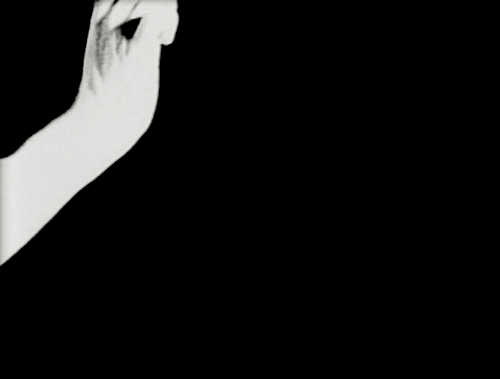
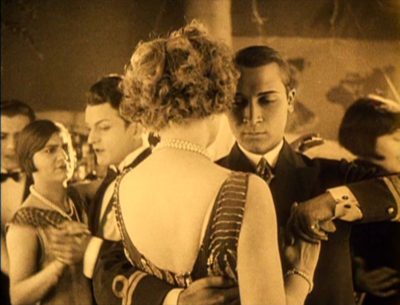
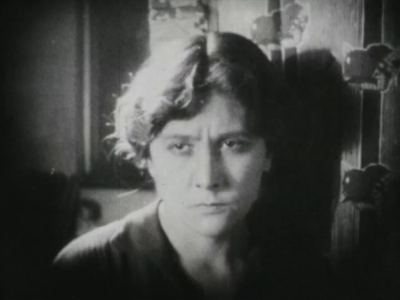

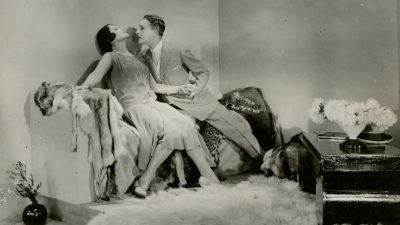

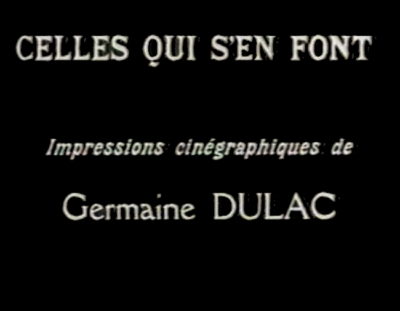


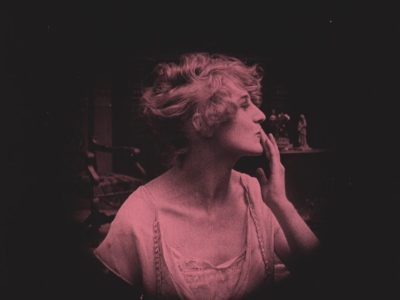
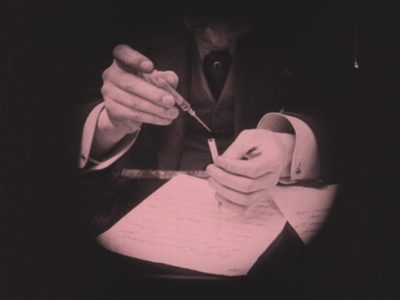
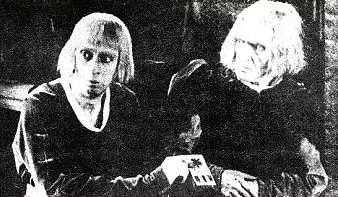

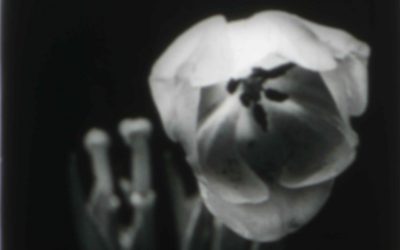
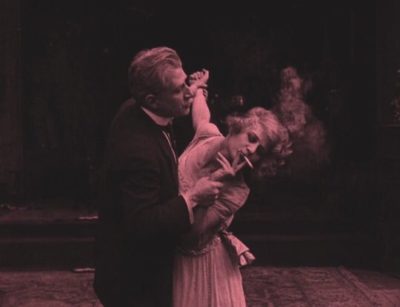





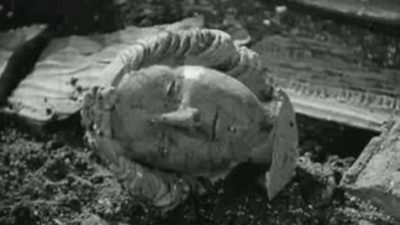



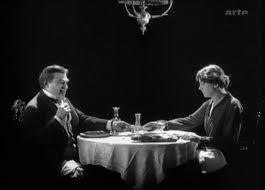

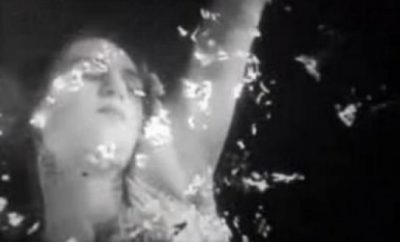
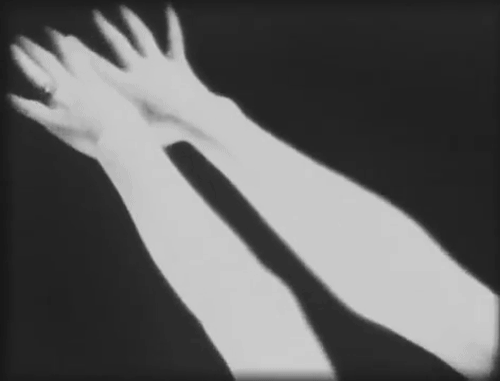
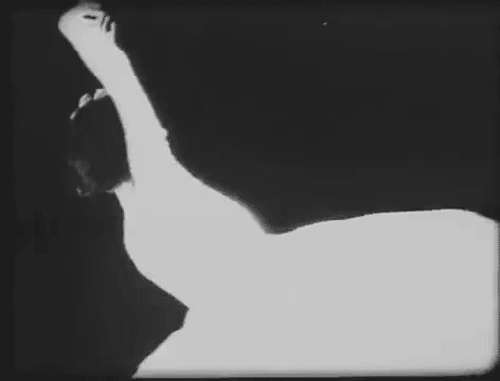
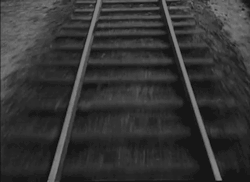
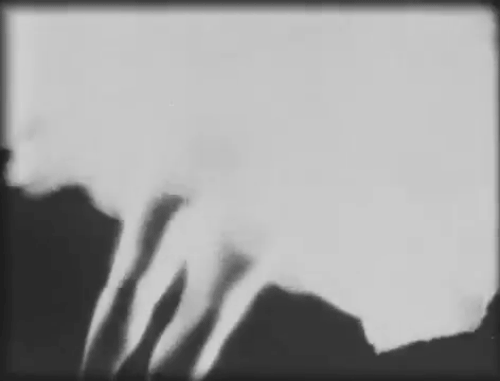
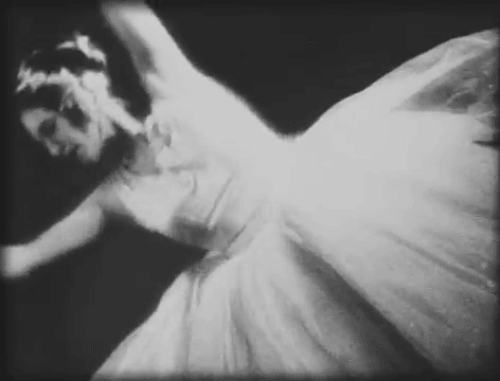
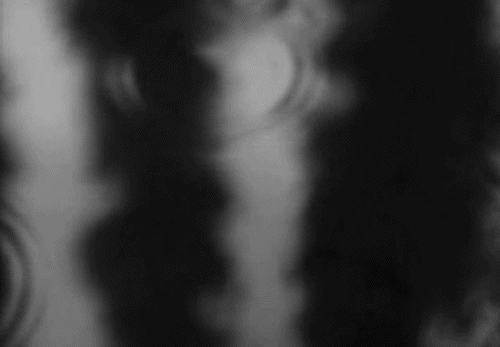

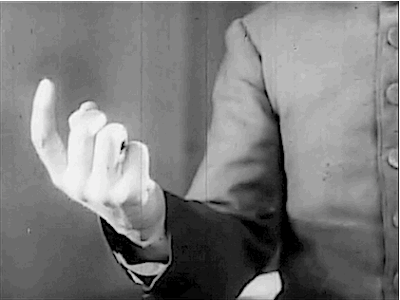

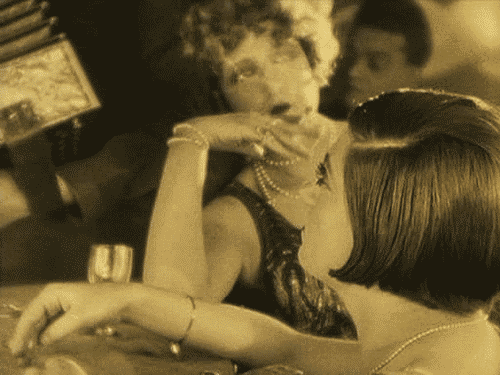
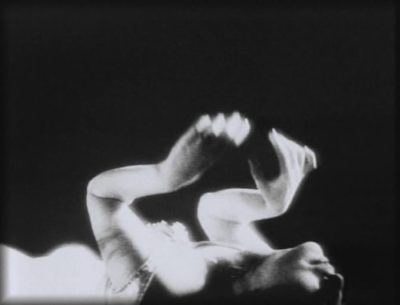
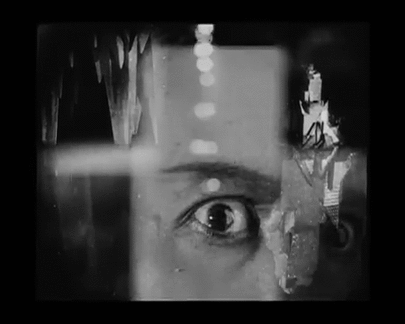
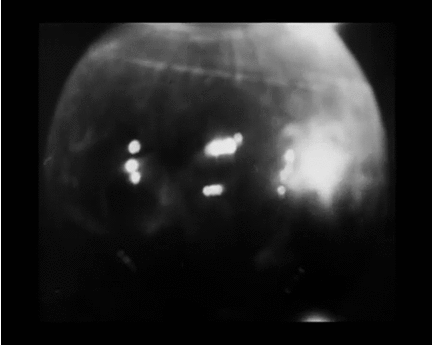




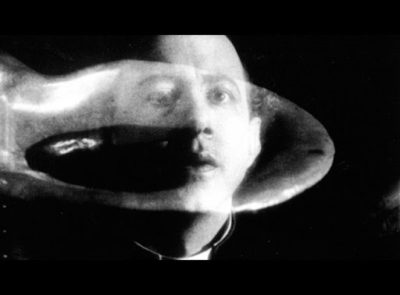


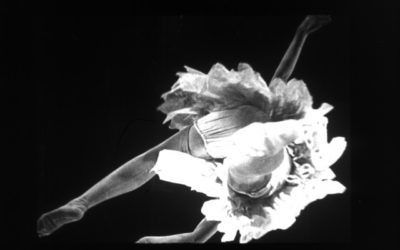
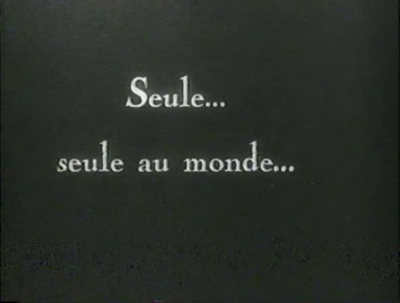
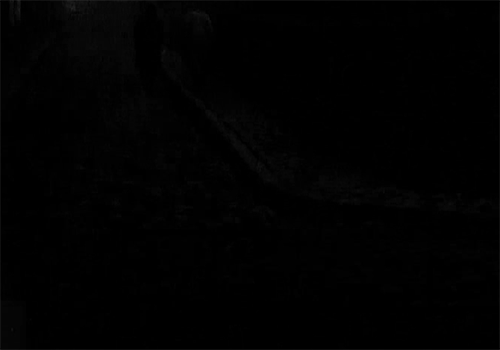
____
Further
Germaine Dulac @ Lightcone
Germaine Dulac @ IMDb
Cinéma, architecture, graphismes : retour sur Germaine Dulac
Book: Germaine Dulac: A Cinema of Sensations
GERMAINE DULAC par Prosper Hillairet
Germaine Dulac at Lincoln Center
Audio: on Germaine Dulac by Mathieu Serruys
LADIES OF THE LAKE
THE “PURE CINEMA” OF GERMAINE DULAC
Another Look at Germaine Dulac’s The Seashell and the Clergyman
The “Dangerous” Germaine Dulac – pioneer of surrealist films
Germaine Dulac @ letterboxd
Germaine Dulac: Writings On Cinema (1919-1937)
Germaine Dulac à l’avant-garde, du muet au parlant
Évocations de la danse dans les théories de Germaine Dulac
A Surrealist Filmmaker’s Legacy of Feminism and Cinematic Innovation
THE DIVIDED ARTIST: GERMAINE DULAC
La souriante Madame Beudet, Germaine Dulac
Germaine Dulac, André Bazin and La Souriante Madame Beudet
____
Extras
Germaine Dulac Video Essay
Les Malheurs de Germaine Dulac (2019) de Gérard Courant
Cinéma retrouvé : Germaine Dulac
____
The Importance of Being a Film Author: Germaine Dulac and Female Authorship
by Rosanna Maule

In November of 1927, Germaine Dulac wrote a letter to the editor of La Nouvelle Revue Française, to lament that, in publishing the scenario of La coquille et le clergyman—the film she had recently directed from a script by Antonin Artaud—the journal had omitted to mention her as the “author”. In her missive, Dulac stressed that she did not mean to attack the journal nor Artaud, who had on other occasions voiced his dissatisfaction with her adaptation and in this issue prefaced his script with an article that clarified his position in relation to the film. Her elegantly phrased complaint ended with a reminder about a conversation that she had had with the editor, in which both had hoped that “les intellectuels et le cinéastes se rapproches, or, ce sont des nuances de mots qui les séparent irrémédiablement” (the intellectuals and the filmmakers should develop a closer kinship to one another, for it is only nuances between words that irremediably keep them apart).
This letter addresses a concept—authorship—that was not prominent in French film discourse at the time. As such, Dulac’s objection to the journal’s omission of her authorial status points to a more general issue at the centre of her—and of other avant-garde filmmakers of the time—approach to cinema: how to translate subjective expression and account for an artist’s creative input in a collective and mechanical art form such as cinema. This question—which ultimately stands at the origin of Dulac’s disagreement with Artaud—is at the heart of auteur-oriented approaches to cinema and reveals the difficult articulation of authorship in film discourse. Indeed, Dulac’s film theory and practice arguably anticipate some of the positions that some 1950s French critics developed: the auteur as a source of cinematic expression and a reference point for their aesthetic appreciation of films. Like these critics, Dulac conceived cinema as a cultural activity placed at the intersection of artistic and industrial interests, as well as different—although interconnected—film modes and movements. Moreover, like many auteur-informed filmmakers—the critics at the Cahiers du Cinéma who went on to become film directors, including Claude Chabrol, Jean-Luc Godard, Jacques Rivette, Eric Rohmer, and François Truffaut—Dulac was also a film critic and theorist, a cine-club patron, and a promoter of film events. In drawing this comparison, my purpose is less to suggest Dulac as an auteur-modelled theorist and filmmaker, than to place her within a long-standing tradition in French cinema, a continuity that Alan Williams and Susan Hayward, among others, have underscored.
Dulac’s preoccupation with defining the filmmaker as an auteur coincides with her effort to characterize cinema as the medium that allows a full expression of human emotions and experiences, as well as a direct rendition of reality. This view of the auteur also enables Dulac to disentangle the figure of the filmmaker-author from a system of representation and signification that identifies the auteur as an enunciative mark of subjective positions, a view that has, as Judith Mayne has remarked, distinctly patriarchal connotations. Dulac never proposed a feminist-oriented or a gender-specific model of the film auteur. However, her films and her writings propose a tactic of disengagement from the premises of the 1920s film and art contexts and offer a viable alternative to the patriarchal affiliation of auteurism with male-informed artistic practices and cultural contexts. My examination of Dulac from an authorial perspective is based on the analysis of some of her writings, which I would argue constitute a valuable complement to the scholarly discussion of Dulac as an important auteur of the French avant-garde.
Sandy Flitterman-Lewis has noted that Germaine Dulac’s production, although characterized by its diversity in categories and genres, “is rooted in the profound unity of her theoretical conceptualizations about the cinema”. That Dulac participated in different film modes is also a result of her association with the French avant-garde, particularly the Impressionist Movement, and its participation in various film modes and circles. This multiple involvement in artistic and commercial film practices was also due to the situation of the French film industry at the time. Since the end of World War I, French cinema was hindered by an economic and institutional crisis, struggling to counteract Hollywood’s emergence onto the international film scene. The fragmentation of France’s film industry into various film companies, many of them small and independent, and the crisis of the national system of film distribution and exhibition coincided with the expansion of alternative circuits of film production and distribution by avant-garde filmmakers.
As Paolo Bertetto notes, Dulac’s participation in the French avant-garde remains both external and internal. According to Bertetto, Dulac’s conceptions and personal experimentations of “pure cinema” and “integral cinegraphy,” indicative of her rigorous commitment to the definition of a new film aesthetic and language, allowed her to play a part in different avant-garde projects and movements, without being exclusively associated with any of them. I argue that this internal/external role also identifies gender-specific possibilities of self-orientation within the cultural and professional environment of 1920s French cinema.
The milieu of avant-garde film practices has proven favourable for the acknowledgement of female authorship in the cinema. Yet, the subordination of gender concerns to aesthetic imperatives within this context of film practices has raised some questions among feminist scholars. This situation reflects a more general quandary in feminist discourse: how to account for female subjectivity in social and cultural contexts where women have no position or voice and femininity is inflected by the concept of “otherness.” Feminist film theorists and filmmakers have come to terms with this epistemological deadlock in various ways. The first wave of feminist approaches and practices concentrated on the notion of “alterity” to explore oppositional models of aesthetic agency and forms of expression, situated in critical and subversive markers of enunciation or in feminine types of écriture. The spectre of essentialism has haunted and eventually prevailed over these inquiries, which implicitly validate the recognition of a dominant context or counterpart. In The Woman at the Keyhole Mayne notes that
[w]hile virtually all feminist critics would agree that the works of Germaine Dulac, Maya Deren, and Dorothy Arzner (to name the most frequently invoked “historical figures”) are important, there has been considerable reluctance to use any of them as privileged examples to theorize female authorship in the cinema, unless, that is, such theorizing affirms the difficulty of women’s relationship to the cinematic apparatus. This reluctance reflects the current association of “theory” with “antiessentialism.”.
The patriarchal premises of auteurism and the peculiar development in which the concept of the auteur has been theorised in film studies have restrained many feminist film critics from discussing women in relation to auteurism. According to Mayne, “whether authorship constitutes a patriarchal and/or phallocentric notion in its own right raises the specter of the ‘Franco-American dis-connection’”. Within this framework of discussion, American theorists consider authorship a form of feminist appropriation of cinematic culture, while French/Anglo theorists “would find ‘authorship’ and ‘appropriation’ equally complicitous in their mimicry of patriarchal self, expression, and representation”. From this perspective, auteurism has mostly encouraged symptomatic approaches to the female auteur, like, for instance, that of Claire Johnston to Dorothy Arzner.
In proposing Dulac as a prototypic auteur critic and filmmaker, I do not intend to suggest that she offers an oppositional or feminine version of auteurism, aligned with a female cultural tradition or a feminine sensibility (an argument which would implicitly place me in essentialist territory). My view of Dulac’s position as an auteur within the cultural and professional environment of 1920s French cinema involves a notion of female agency in terms of dialectical relations with different types of film modes and systems, set at the intersection of personal expression and professional orientation. For, as Flitterman-Lewis stresses:
…[I]t is never a question of films having been made by individual men or women or of a specific content speaking to the needs of a particular sex. Rather, as Stephen Heath maintains, “What one has is always a structure of representation in and from the terms of which position enunciations can be engaged, specified as ‘masculine,’ ‘feminine,’ with the possibility of reappropriating the latter as a site of resistance to the domination, the definitions, the assignments of the former.”
_____________
10 of Germaine Dulac’s 31 films
_____________
w/ Jean Brérault, François Mauch Le Retour à la vie (1936)
‘Distributed as part of a larger series of social issue films and ‘social newsreels’ by the Cinema Section of the Federation of the Seine.’
the entirety
_____________
Étude cinégraphique sur une arabesque (1929)
‘When making a film, the story is usually put in the foreground while the image stays in the background, that is, theater is preferred over cinema. When the relationship will be inversed, cinema will begin to live according to its proper meaning. The struggle of an image held captive in the deepest sense to its orchestration, against the literary, dramatic error. The whole problem of cinema is contained in the word “visualization”. The future belongs to the film that cannot be told. The Seventh Art, the one of the screen, is depth made sensitive and visual, which extends beyond story, analogous to the indescribable of music. Such a conception necessarily leads to a revision of cinegraphic themes.’ — Germaine Dulac
the entirety
_____________
Thèmes et Variations (1929)
‘I evoke a dancing woman. A woman? No. A bouncing line with harmonious rhythm. I evoke a luminous projection on veils ! Precise matter! No. Fluid rhythms. Why should one disregard, on screen, the pleasure that movement brings us in the theatre? Harmony of lines. Harmony of light. Lines, surfaces, volumes evolving directly, without the artifice of evocation, in the logic of its forms, dispossessed of any overly human sense, allowing an elevation towards the abstract, thus giving more space to sensations and to dreams : integral cinema.’ — Germaine Dulac
Excerpt
_____________
Disque 957 (1929)
‘Dulac’s three 1929 “abstract” films, Disque 957, Αrabesques, and Themes and Variations, were the results of a long period of reflection by the filmmaker, who sought to create a “pure” or “integral” cinema that would capture the essence of the new medium and owe nothing to the other arts. Each of these three studies was designed to be played silent. The first one, Disque 957, is conceived of as a “visual impression […] in listening to Frédéric Chopin’s Preludes n. 5 and 6”. Its title and its opening shot of lightplay on a spinning record not only announce the film’s dominant cyclical motif, but also evoke one of the filmmaker’s major sources of inspiration in Loie Fuller’s serpentine dances.’ — Avant-Garde Film Festival
the entirety
______________
Celles qui s’en font (1928)
‘In this film, the title translated as ‘Those Who Make Themselves,’ we follow a destitute drunk woman who appears to yearn for the life of a prostitute or to engage in some sort of tryst. It is also possible that she is simply despondent over rejection by a lover. She appears to fail at everything she tries and eventually walks down a staircase into the Seine river. It’s a very simple film that manages to convey a deep sense of loneliness.’ — nazimova
the entirety
______________
Danses espagnoles (1928)
‘One of several short music films that Germaine Dulac made in 1928/29. This one presents Carmencita García, described in the film’s intro and IMDb profile as having been a famous dancer, though I can find no other evidence of her existence on the internet. She is good in any case, and does several Spanish dances. This is an exercise in splitting a dance apart via cinematic means while still keeping (and even enhancing) its rhythm and excitement. An attempt is made to partially abstract the objects involved in this situation, to break everything apart into its constituent parts. We get eyes, hands, feet, all framed very deliberately. It creates a dynamic cubist portrait of dance. It’s successful, and a clear precursor to Maya Deren’s Ritual in Transfigured Time as well as likely an element in the DNA of future musical and even action film.’ — Nathan
the entirety
____________
La Coquille et le Clergyman (1928)
‘The Seashell and the Clergyman is an experimental French film directed by Germaine Dulac, from an original scenario by Antonin Artaud. It premiered in Paris on 9 February 1928. The film follows the erotic hallucinations of a priest lusting after the wife of a general.’ — iconauta
the entirety
_____________
L’invitation au voyage (1927)
‘Silent film pioneer Germaine Dulac adapted her 1927 feature L’Invitation au voyage from the poem of the same title by late-19th century French belletrist Charles Baudelaire. The film represents an attempt by Dulac to create a work entirely liberated from cinematic narrative per se. It is a “visual symphony,” comprised of rhythmically intercut images that embody projections of the artist’s raw and direct feelings, unadulterated by the contrivances of story.’ — Nathan Southern
the entirety
______________
La souriante madame Beudet (1923)
‘The Seashell and the Clergyman was the first surrealist film, directed by Germaine Dulac in 1928. Given Dulac’s gender, for those playing the cinema history home game, it also counts as the first surrealist film directed by a woman. That alone would make for a sufficiently pioneering achievement for any career in film, but Dulac had already accomplished another important act of cinematic trailblazing with La Souriante Madame Beudet (The Smiling Madame Beudet), a short silent that also happens to hold the title of the first feminist film. Where Dulac worked from a story by Antonin Artaud in the The Seashell and the Clergyman, she works here from a story originally by Guy de Maupassant, one revolving around a wife, the titular Madame Beudet, pushed to the brink by years of life with her boorish husband.’ — Open Culture
the entirety
______________
La cigarette (1919)
‘Dulac’s earliest extant title, LA CIGARETTE concerns a liberated young woman and her older husband who believes she is having an affair–speaking to a real postwar crisis of masculinity in France. With its understated acting and location shooting, Dulac fuses realistic tendencies with impressionistic visual association, building tension between modernity/antiquity, life/death, and masculinity/femininity through cinematic-specific techniques, editing, and more.’ — letterboxd
the entirety
*
p.s. RIP Luther Price ** JM, You’re freed! Well, free, present tense! Congrats, man. Yes, actually there’s a ‘welcome to the world’ post about that very Grant Maierhofer book coming up in just a couple of days. I like his work very much. I don’t have Netflix, but I would like to see that Spike Lee. Great about the theatrical return, and the new piece certainly sounds intriguing. Thanks about our film. It was a very good meeting, and we have some possible game plans to get the film funded and shot in the way we want. A lot of work to do that, but that’s par. ** Ferdinand, Hi. I’ll go check out the Adult, thanks. I … don’t think I’ve read Ottesa Moshfegh unless I’m spacing. I’ll go find out. Kudos! ** Misanthrope, Hi, G. I just dread the inevitable summer heat that the immediate future portends like, well, the plague. The lockdown/quarantine turned the escort world a little fetishy and nuts, but, from my recent forages for future arrays, things do seem to be getting back to ‘normal’ somewhat. I like calzones enough to eat yours by proxy complete with the massively basil-ed up sauce. ** David Ehrenstein, Hi. Haven’t seen the Allen, Straub, or Munch, all of which I want and intend to see ASAP. Thank you. ** liquoredgoat, Hi, D. Well, of course, man. I have eyes and a brain. I’m a ginormous Lutz fan, and that collected book arrives via heaven if you get into his prose-making genius. I hope you’re doing really well. ** Tosh Berman, Hey, Tosh. I like Ian Pennman’s writing, and I don’t know that book, so it’s on my list. And the Cardew is news. Wow, that does sound fascinating. Okay, that too. Thank you kindly. ** wolf, Hi, w with a capitol ‘W’. I have not heard that new Moor Mother split, so that’s in today’s cards. She’s great. So cool that you’re into her too. I will reserve at least half of my next double espresso or cafe allonge for you from heartfelt afar. And, cool about the Skype. Just let me know when is I’m good for you. I’m all around. ** chris dankland, Well, of course, man. X-R-A-Y greatly helps me get through almost every day. I’ll seek out the Nicolette Polek. You are correct: I actually know/have that Miscarriage album and like it a bunch. I know about half of the records on your list, and the rest will get a testing out soon. Thank you! Yeah, the shitstorm of self-serving garbage with which Trump and slaves are overseeing the pandemic is positively criminal. To go by things here so far, doing it right was pretty simple, really. Hardcore quarantine followed by very gradual reopening with the cooperation of the citizens. It’s not rocket science, etc. It’s just shocking to watch the US flail through this whole thing. I so hope the ship gets righted and all of that, somehow. Very very best getting through that. Hopefully it won’t be as bad as it could be. So hard to tell. Stay safe, and see you soon, I hope. ** Chris Kelso, Hi, Chris. Great to see you! Your recent big whopper of a book is still awaiting me, and I’m really looking forward to reading it. Yes, I like Steve Finbow’s stuff. I think a book by him was in my last year’s favorites list, if memory serves. Yes, I have a big bunch of Mike Diana’s comix back in LA. He’s amazing. Is there a collected ‘Boiled Angel’ book or anything? I’m sure his stuff is quite to get published and released in this climate. Take care. ** _Black_Acrylic, Hi, B. Grr, sad, about your iPhone, but I’m glad you’re being very industrious and on the upswing. And what a nice brother. ** KK, Howdy, K! The Shipley is excellent. He has a new book soon from Infinity Land Press that’s also really great. I have not heard the Ka. Clearly I must. I will. Ouch, or yikes, I guess, about your laptop’s battle with the stove. Ghosts? Evil ghost? Glad it’s weird and functioning at least. Take good care. ** Bill, Bill, sir, good morning. The Gordon post isn’t for a few weeks, so you’ve got some time. My hunt for access info on Luis and Andrés Rodriguez’s ASCENT only lead me to an upcoming screening of it here in Paris. Not much about it out there. Anyway, I wouldn’t have noticed that screening if not for you, so thanks, and, assuming I go, I’ll let you know at least. I should read the new Percival Everett. A bunch on your music list that I don’t know. Yum. I’ll get acquainted. Thank you, thank you. ** Steve Erickson, Morning, Steve. I’ll seek what’s on your lists that I don’t already know. I am curious about the new Mould. And I’ve been meaning to get the Caribou, which seems like kind of a creative comeback from what I’ve read. Happy to see the Schanelec film on your list. ** Mark Gluth, Hi, Mark! Things are good. Yes, I follow the developments in the US like the veritable computer-friendly hawk. A fair amount of sizeable action/protests here too, closely related to yours but ignited by a similarly horrendous racist killing of a young guy in the burbs here. ** Jeffrey Coleman, Hi, Jeff. This is a true and rare pleasure. I do know about the Burial Grid soundtrack, and I have it somewhere, and I liked it too. The Sam Pink is very nice. Brendan Connell: that’s interesting. I haven’t thought him in a while. Great call. I’m gonna go catch up/re-investigate. I hope stuff’s excellent with you. ** NLK, Hey! It has been a while, and this is a really cool thing, your visit. I think there are going to be the usual of late online launch ‘events’ for Diarmuid’s book, but, yeah, that’s the story. I’m with you on the Greenwell overhype. I haven’t seen that Jodie Mack film. It sounds amazing. I’ll try to find it, thanks a lot. My city is strangely treating me quite well. Are you in a pocket of upbeat recovering or oppositional scariness? You sound good. I hope you are. Catch me up on your doings anytime, please. ** James Nulick, Hi, James! I don’t know either of those books you read. Noted. Zac and I hope to get to LA in October for Halloween and some film stuff, but it’s seems impossible to know if things’ll be okay enough there by then to actually make it. I sure hope so. Love, me. ** Quinn R, Hi, Quinn! My June has been fairly solid so far. Yes, of course I’m carefully follow the street actions in the US right as closely as time and internet and distance allow. So intense, and, dare I say it, even very hopeful. Whoa, you’re actually coming over! Barring an unexpected (fingers crossed) back slide, things should be pretty nice here by then, apart from a heat wave or something. Let’s definitely hang out. Zac and I are going to zip over to western Germany to hit a theme park at some point in July, and I’ll be in Rennes for a couple of days in the later month to work on a new theatre piece, but I mostly should be here in Paris doing whatever. Gisele’s and my ‘TIHYWD’ in Paris gig is tentatively rescheduled for next spring, but we’ll see. I’m working in some GIF things and some film things and a bit of Gisele things right now. Busy enough. You? Please wish Mr. Ford a very happy birthday from me if you see him. Nice to see you, and I look to seeing you for real soon. Do you know when in July you’re coming? ** Okay. The blog get swamped today by the works of the amazing filmmaking pioneer Germaine Dulac. A true treat if you’re in the mood. See you tomorrow.




 Now available in North America
Now available in North America 
Hi Dennis,
Glad it arrived safely. There is a coffee-table-book-type collection of Diana’s that I have – it’s called ‘America: Live/Die’. I think you’d appreciate it aesthetically as well – it comes in a slip-case and has an intro from Neil Gaiman. Pretty cool. I felt there was a similar oeuvre in Horror Hospital. An anarchic and singular vision with naive art style (which is perfect).
I subscribed to the Bret Easton Ellis Patreon and really enjoyed your episode of the B.E.E podcast. I’ll let you know when ‘Wrong’ arrives!
Hosting an online screening of Häxan tonight – wish me luck!
Stay safe!
Chris
I think you will like Mcglue from Moshfeg, inspired by the author who read one of those historic news paper articles concerning a killing.. its abit like a genet character, i listened to an audible re- enactment and found it moving. The author said it was like the sailor on trail had taken possession of her. Her my year of rest and relaxation audible re-enactment was also very effective. It sounds like her novels will be getting the Hollywood treatment. “Homesick for another world” might be also be agood place to start, a short fiction collection.
I watched the 29 palms and I liked it, just a pity my cheap tv’s color temp was way too cold for a desert story.
Wonderful to see this salute o the great Germaine Dulac, whose films everyone should know — especially “The Smiling Madame Beudet”
Dennis, Totally unfamiliar, of course, with Dulac. So…thanks! Again. 😀
Oh, man, that sauce was green after I added all that basil. My mom was like, “I like basil, I would’ve eaten it.” So that makes two of you, haha. Good thing about calzones and strombolis is that you can put whatever you want in them.
The only good thing about the heat and attendant humidity and sunlight is that it should help with the Rona.
I don’t know if you’ve heard, but it seems Will Bernardara Jr. has died. I was friends with him on FB until he just disappeared from there. He was really funny and quite a talented writer. If this is true, RIP.
I forgot to leave a comment yesterday, but I imagine it would have been along the lines of my usual “I’m holding off on such lists until the end of the year” spiel. I will say that many of the fiction books you gave a shout-out to I either have read or are planning to read in the near future.
Today’s my birthday, hit the big four zero.
Greetings Dennis!
New Shipley?? A quick googling shows me all the need to know to get me really excited. I don’t understand exactly HOW that guy writes, but it’s so fascinating. Someone told me that his book he did when he locked himself watching ‘Begotten’ is getting re-released. I think Inside the Castle is doing it? Pretty sure, wouldn’t be surprised. I’ll start on the theory book probably today. I’ve been reading some Mark Fisher again. Always relevant, always on. RIP to a real one. The Shipley will pair nicely.
Cannot recommend Ka enough. His alter-ego Hermit and the Recluse is always great. The guy releases these monster records when he isn’t working his firefighting job. Like the Larry Brown of New York rap.
Take it easy Dennis.
Great entry today. I love Dulac, though I’ve always wished the Seashell and the Clergyman was as good as it sounds.
The Mack film is actually streaming on her website with almost all of her other shorts at the moment. I think it was an isolation gift or some such. I’m good, considering. Iowa City has been smart enough about public health but the rest of the state has been pretty resistant and the trajectory reflects that. So I’m kind of in a pocket of recovery inside of a pocket of lazy negligence! And the one is sure to bleed into the other soon. Fuckin’ convenience mongers.
The almost daily protests marches and speeches here give me hope and make me feel more connected to other young people more than just about anything else. But the bureaucracy in the way of everything is suffocating & depressing. In terms of personal things, I pitched an article on Genet’s Un Chant d’amour and sex in isolation, so we’ll see what happens with that. Though I’m not sure I’m prepared to write it yet, so the idea of it getting commissioned almost plays worse on my nerves than it getting rejected! Otherwise, I’m trying to finish or refine half-completed writing projects before moving on to something else big. The unfinished things really clutter up my brain. Thinking of maybe starting a blog for casual & in-depth culture writing, since what I want to write is usually too niche or too long for what anyone wants to publish. I love writing nonfiction but the academic and journalistic formats are so limited and repetitive. We’ll see. Mostly gave up writing fiction and poetry the past 3/4year and I don’t know what that means yet…Thanks for the well wishes. I’m interested in the past tense in the title of I Wished. Your titles are mostly noun-infinitive unless I’m forgetting something. Just a stray thought…Godspeed.
Trump’s speech in Tulsa next week, with tens of thousands of people gathered inside (without masks, as a sign of their conservatism), is a rare example of a president out to kill his supporters. His rule long ago turned into pure nihilism. Meanwhile, I wonder where my mail-in ballot for next Tuesday’s primary is.
I heard Mexican producer Paul Marmota on Bandcamp for the first time today and found his recent singles very exciting. He charges $30 to download his last album ZONA II, but he’s dropped an album’s worth of loose singles since then. He plays a dark, menacing style of dance music that makes me think of gqom if it was descended from reggaeton.
The 2018 French TV series PROUD starts streaming through American arthouse theaters this Friday. Have you seen it?
Here’s my review of the Roy Cohn documentary BULLY. COWARD. VICTIM.: https://www.gaycitynews.com/roy-cohn-trumps-bullying-coach/
I downloaded some more synthesizer patches and loops today, so I am looking forward to writing more music. I’ve been doing a lot of work with samples from trap and drill music lately. If you isolate the basslines or keyboard riffs, they tend to sound foreboding and melancholy but not necessarily recognizable as hip-hop, even if they started out as “Lil Baby type beat” or something like that.
I’d also recommend DA 5 BLOODS. Like most of Spike Lee’s films, it’s messy and excessive, and not quite as successful at that as CHI-RAQ and BLACKKKLANSMAN, but Delroy Lindo gives the performance of the year, and there’s tons of interesting material and ideas in its 2 & 1/2 hours.
Hey Dennis! Yeah, I’ve been following your protests as well, maybe not as much as I could. It
feels not super well covered here, or mayhaps I’m being subconsciously lazy.. But it’s super invigorating and inspiring.
Mark
Hey man,
How are you?
Thank you so very very very much for including my little pamphlet in yesterday’s post. I never imagined I could ever be the recipient of such honors. As I said to a friend yesterday; I’m expecting to wake up any moment now. So, THANK YOU once again and like I’ve said I take none of this for granted at all and this little pamphlet of mine just wouldn’t exist at all if it weren’t for you; as simple as that. NOTHING written by me would exist if it weren’t for you. Again, my debt towards you is Immense and Infinite. Thank you, my very dear friend.
So, today I finally read Eugene Marten’s ‘Waste’. Impressive Masterpiece. Loved loved loved it. Such a great writer and such great writing. Just impressive.
Any specific plans for today?
Good day, good luck,
Love and Hugs,
a.
the seashell and the clergyman was very interesting !! thank u for introducing me to dulac, I’d never heard of her. maybe the times are ripe for a big dulac wave to sweep through culture, she seems very cool. I’m excited to check out her other stuff, thank u for collecting so much of it.
the seashell and the clergyman gave me some anxiety !! the good kind. while watching it I kept thinking that this would rank very low on the list of things u’d want to see while tripping. a lot of those images were very unsettling to me, like how objects or people in dreams are sometimes invested with all this intense heavy foreboding significance and u can’t figure out why. I thought the soundtrack was really good too. a lot of the film reminded me of eraserhead – though I probably should say that eraserhead reminds me of dulac, since lynch seems to draw a lot from that era of film.
that’s cool u knew a bunch of those metal records !! yesterday I watched a bunch of interviews with the lead singer of watain, b/c I wanted to hear if he had anything to say about satan. he had some cool sounding cryptic soundbites, but i’m not exactly sure what he believes. gorgoroth interests me for the same reason, especially when they talk about the music having no importance besides being a tool to deliver the satanic message that they want to spread.
i’m trying to find bands that earnestly worship satan as a diety. I guess that’s something you’ve probably thought about too, since satan worship appears in yr books. the idea of worshiping an evil god that is dedicated solely to inflicting suffering and domination is very resonant to me in a ton of ways.
but most of the extreme metal guys don’t seem that way to me at all, they mostly seem like a different version of sort of cool but sort of geeky indie authors who are really into a type of music, and I appreciate the almost boutique underground community they have, where everybody is making micro-runs of cassettes and stickers and t-shirts and things like that.
thanks for letting me vent about covid yesterday, it’s a frustrating situation and I agree with your points 100%.
i wish they could rename my school corpsegrinder elementary (metal hands emoji)
have a good morning !!